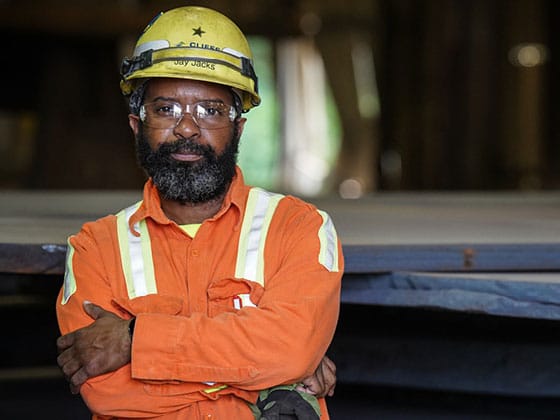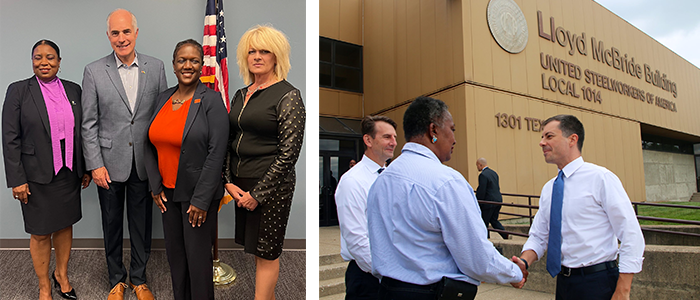Iron Range Proud: Minnesota’s Miners are the Backbone of the Region’s Economy

When he was a child, Ryan Elkington would play and swim in the woods and waterways between the towns of Eveleth and Virginia, Minn. Now, as a member of Local 6860, he’s a part of the USW work force that mines that same location for the iron ore that fuels the American steel industry.
“This used to be my playground,” Elkington said, gesturing toward the area along U.S. Highway 53 that is home to the Cleveland-Cliffs United Taconite mine. “Thirty years later, I was a part of digging it up.”
Someday, that same piece of earth – which today is filled with the valuable minerals that give northeastern Minnesota’s Iron Range its name – may again become a playground for Elkington’s grandchildren or great-grandchildren.
Decades from now, when the open-pit mine is no longer of use, it is expected to naturally fill with fresh water and become another of the many reservoirs in the Land of 10,000 Lakes.
“There is a very good balance here,” Elkington said, “between the environment and getting the job done.”
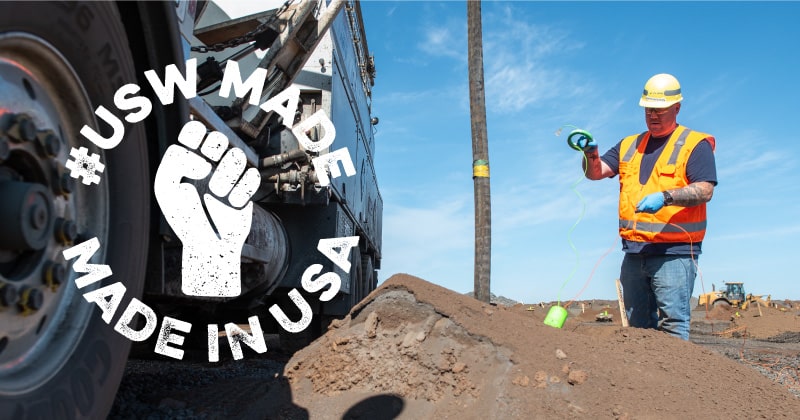
Infrastructure Push
The job of mining ore has been the driving force for an economy that has supported tens of thousands of workers and families on the Iron Range for generations. And it’s one that the members of Local 6860 and thousands of other miners in the area hope can continue for generations to come.
“It’s a way of life here,” Elkington said.
One way to ensure that way of life – iron ore mining, and its end product, steel – both have a bright future is to invest heavily in rebuilding the nation’s crumbling infrastructure, said Local 6860 President Jamie Winger.
“Everything starts with steel,” Winger said. “I don’t think we could afford not to do it.”
Winger’s stand on federal infrastructure spending is in lock-step with that of the USW, which earlier this year launched a nationwide campaign, called “We Supply America,” to ensure a robust, comprehensive infrastructure plan that would rejuvenate American manufacturing and support tens of thousands of union jobs for decades into the future.
That effort paid off when President Biden signed the $1.2 trillion Infrastructure Investment and Jobs Act on Nov. 15.
Investments like those in the new law are particularly important for the residents of the Iron Range, where the strength of the mining industry is synonymous with the region’s economic well-being.
When asked what people on the range do if they don’t work in mining, one visitor to a local coffee shop summed it up very simply – “We sell stuff to miners.”
Local 6860 Vice President Ryan Denzel echoed that sentiment.
“Everybody in this range has something to do with mining,” he said, noting that he and his neighbors make a point of eating at local diners and coffee shops and shopping at locally owned stores whenever possible.
“This infrastructure plan will keep us going. That will mean a lot to us on the range,” Denzel said. “Everything that moves America is based on iron.”
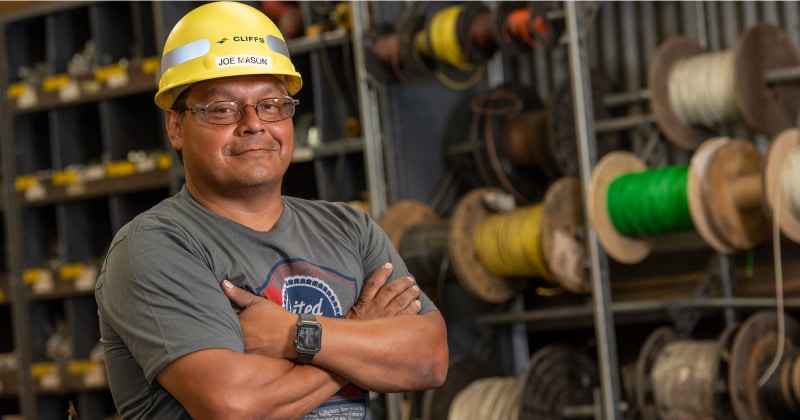
History of Mining
For surveyor Greg O’Malley, who has worked at the Cleveland-Cliffs mine for 14 years, the solidarity of the USW membership has helped both to strengthen the industry and to provide a higher quality of life for families throughout the region by ensuring good wages and benefits.
“The more people stick together, the stronger we are here,” O’Malley said.
The residents of northeastern Minnesota have understood for a long time that mining is the lifeblood of their communities. Many of the small towns in the area were developed by companies that owned mines nearby. The mines funded schools, hospitals, parks, libraries and other public assets that in turn attracted workers to the facilities and communities.
While most of the mining in the state takes place in the northeastern region, the industry still provides benefits to the entire population through the Minnesota Permanent School Fund.
The system, created in 1858, directs royalties paid by mining companies and other companies that utilize state-controlled natural resources into a fund to provide a long-term source of financing for Minnesota’s school system. During the 2020-21 school year, the fund provided $37 million to educational facilities throughout the state.
Mining is such a part of the fabric of Minnesota, in fact, that the residents of Hibbing, founded in 1893, once moved their entire town two miles south, brick by brick, in the early 1920s after ore was discovered under their feet. The move affected more than 20 businesses and 180 homes.
“Minnesota has always been a global leader in responsible mining,” said District 11 Director Emil Ramirez. “Mining supports our communities, and the people here are committed to doing it in such a way that it is sustainable, so that we can protect our natural resources as we continue to grow our economy for the next generation.”
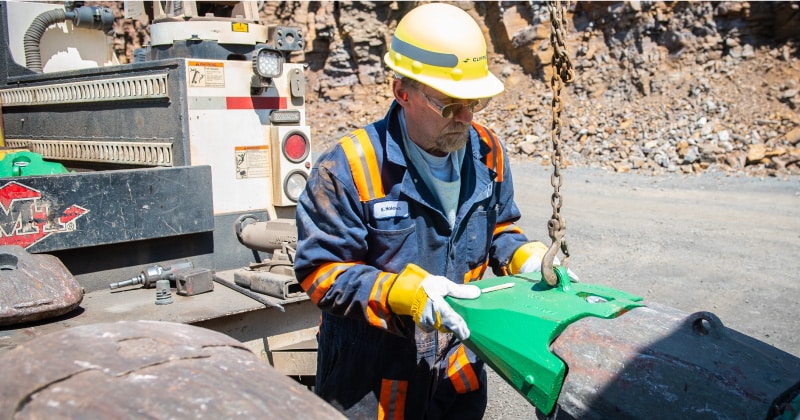
Economic Jump-Start
The kind of economic ripple effect that mining has in northeastern Minnesota can be replicated in industrial communities across the country as a result of the new infrastructure plan, Winger said.
“It’s important that we start supplying ourselves,” he said. “There is no reason that our money should go anywhere else.”
This August, the USW held a nationwide week of action in support of the “We Supply America” program, which included a bus tour of six USW locals and resulted in thousands of phone calls, emails and postcards from USW members urging lawmakers to act quickly to put Americans to work rebuilding the nation.
The first stop on the bus tour, in northwest Indiana, included an appearance by Lourenco Goncalves, Cleveland-Cliffs’ chairman, president and CEO, who credited the strong unions at his facilities for ensuring the kind of hard work and continuity that results in quality products.
Goncalves said he was proud of the hard-working union members at his company and proud to be an advocate, alongside them, for robust infrastructure investment.
“We are the United States of America,” he said. “United, as in union.”
Goncalves has won praise from the USW leaders at his mines, steel plants and other facilities for his efforts to strategically grow and strengthen Cleveland-Cliffs as a company while showing respect for workers and their communities.
Last year, Cleveland-Cliffs, founded in 1847, acquired AK Steel and most of the assets of ArcelorMittal USA to become the largest USW employer in the industry, and the largest flat-rolled steel and iron ore pellet producer in North America.
“They are the real deal,” said Local 2911 President Mark Glyptis, who represents workers at the Cleveland-Cliffs tin plate facility in Weirton, W.Va. “The opportunities we have ahead are the best we’ve had in decades.”
Focus on Safety
In addition to expanding those opportunities, Cleveland-Cliffs and the USW work closely together on the vital issue of health and safety. For the members of Local 6860 in Minnesota, that is one of the most important issues the union faces day in and day out.
“Safety is just everywhere here. It affects me all the time in my job,” said Elkington, a co-chair of the local’s grievance committee, who spends his work days preparing blast sites at the Cleveland-Cliffs mine. That is among the first steps workers must take toward removing iron ore from the earth, and it’s a process that requires precise attention to detail.
The hierarchy of controls is essential, especially so in an industry involving huge rock formations, massive machines and constantly moving parts.
The iron ore mining process at United Taconite begins in an enormous pit where workers extract chunks of rock with huge excavators and load them onto hauling trucks the size of small houses.
The workers then transport those rocks to be crushed into smaller pieces which are fed to a nearby processing plant, where the ore is milled into a powder-like consistency. Machines use recycled water and large magnets to separate the ore from unwanted material and form marble-sized pieces known as pellets. Those pieces are then transported to mills where they are melted in blast furnaces as part of the steelmaking process.
Cleveland-Cliffs’ eight operating blast furnaces are among the lower greenhouse gas-intensive integrated steel operations in the world, due in large part to the use of environmentally-friendly iron ore pellets produced in the United States.
“It’s sophisticated,” Winger said of the mining and pellet-making process, “and yet simple.”
Elkington, whose father also was a miner and whose grandfather died many years ago in an accident at another mine, said he is proud of his family’s legacy as producers of the building blocks of the steel industry.
His father worked in the mines for 33 years, and his grandfather’s tragedy, Elkington said, resulted in “policies that are still in use today” to keep workers in the mining industry safe from the hazards that cause harm.
Environmental Legacy
Another legacy that the workers at United Taconite are committed to maintaining is the natural beauty of their surroundings. They understand that they must strike a balance between economic and environmental interests to ensure that their industry has a bright future.
“If you are truly an environmentalist, then mining has to be done in the United States,” said Winger, noting that U.S. environmental and safety regulations are the strongest in the world, and that importing materials from other countries would be more expensive and potentially dangerous. “I don’t think we can afford not to do it here.”
Electrician Joe Mason agreed.
“The U.S. is a leader in being a steward for the environment,” he said.
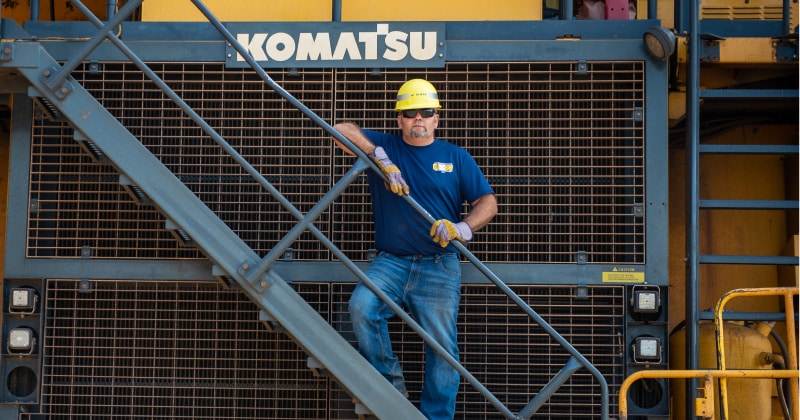
Community Partners
The pride that the residents of the Iron Range feel about the region’s mining legacy, as well as their desire to protect their environment, stretches far beyond the edges of the mine and the walls of the plant.
For Elkington, there is a feeling of satisfaction in being a “building block” for the steel industry. When he sees a bridge or a building under construction, he said, he often wonders if the steel was produced using iron ore from the United Taconite mine.
“I’m constantly thinking, ‘Was that our pellets? Did I have a hand in that?’” he said, noting the number of additional projects that will require steel as a result of the Biden administration’s rebuilding plan. “The infrastructure plan is vital for us.”
The workers at United Taconite have seen over the decades what a strong steel industry does for their workplace, while also experiencing the struggles that come with industry downturns.
About five years ago, the company was forced to lay workers off during one of those periods. Elkington was one of the members who found himself temporarily out of a job.
“It was tough,” said Elkington, who went to welding school while he was on layoff. “We didn’t know if we would be coming back.”
The USW’s mine workers weren’t the only ones facing uncertainty at that time. Towns throughout the Iron Range feel the sting when the industry struggles.
“It’s a big part of our economy,” agreed Wendy Erickson, who is married to Elkington and who also works at the United Taconite mine. “There are a lot of spinoff jobs.”
Even residents who don’t work in the industry are proud of the role mining plays in their lives, said Local 6860 member Brian Zarn.
“It is a source of pride,” said Zarn. “What we produce here is important, to national security, to infrastructure, to the entire country. This is the beginning of it all.”
Next Generation
Through that ripple effect, the USW has provided residents of the Iron Range with a good life for generations, Erickson said, and the new infrastructure plan will help to ensure that life can continue for generations into the future.
“It’s awesome to be the first step in steel, to be a little piece of the puzzle,” she said. “We absolutely are living the American Dream.”
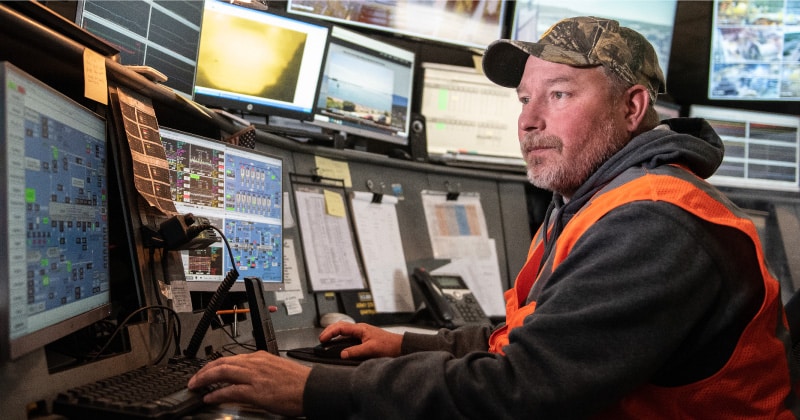
By clicking Sign Up you're confirming that you agree with our Terms and Conditions.
Recent News Articles
Want to Learn More?
See how the USW is making a real difference in our communities and our workplaces.
